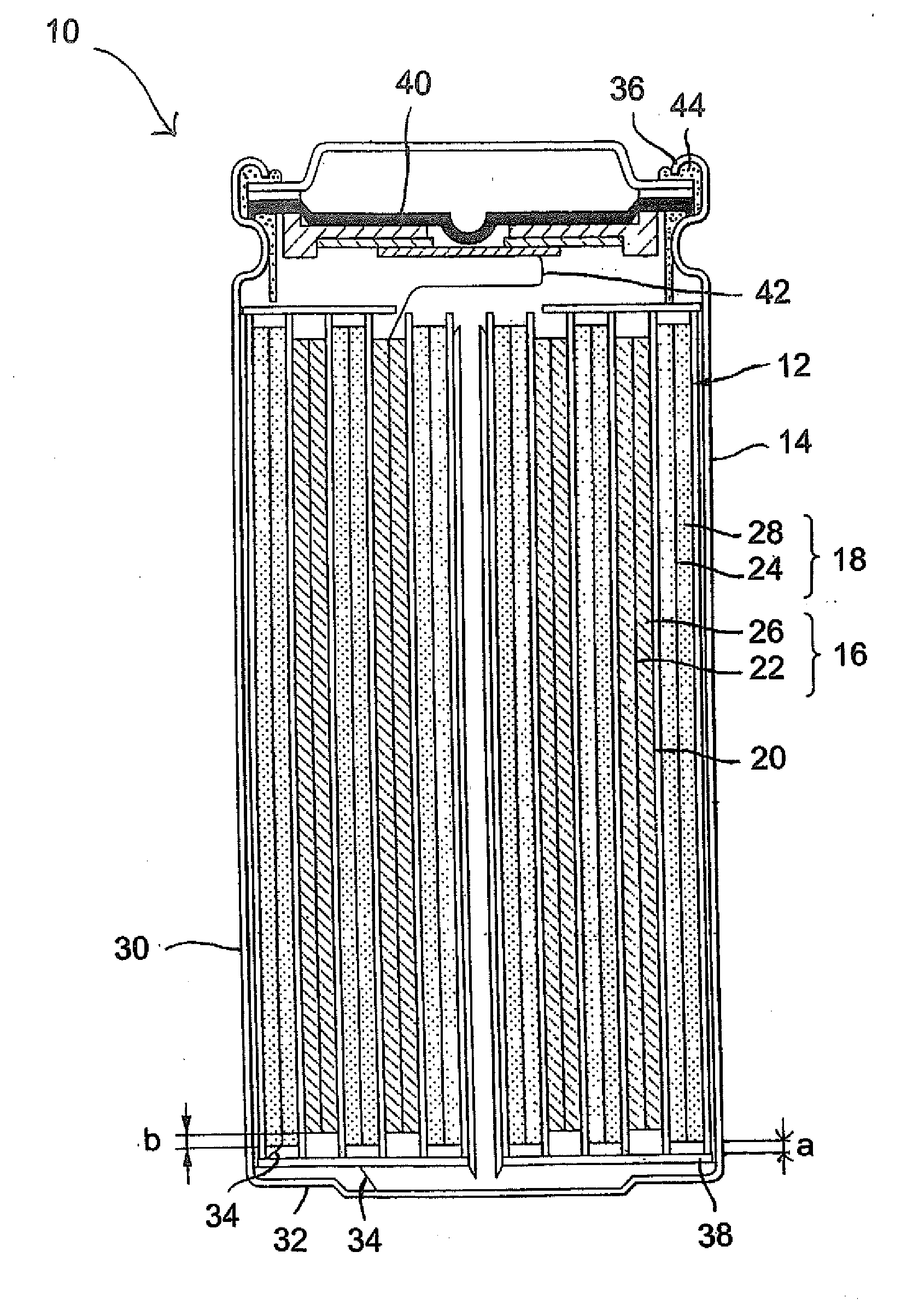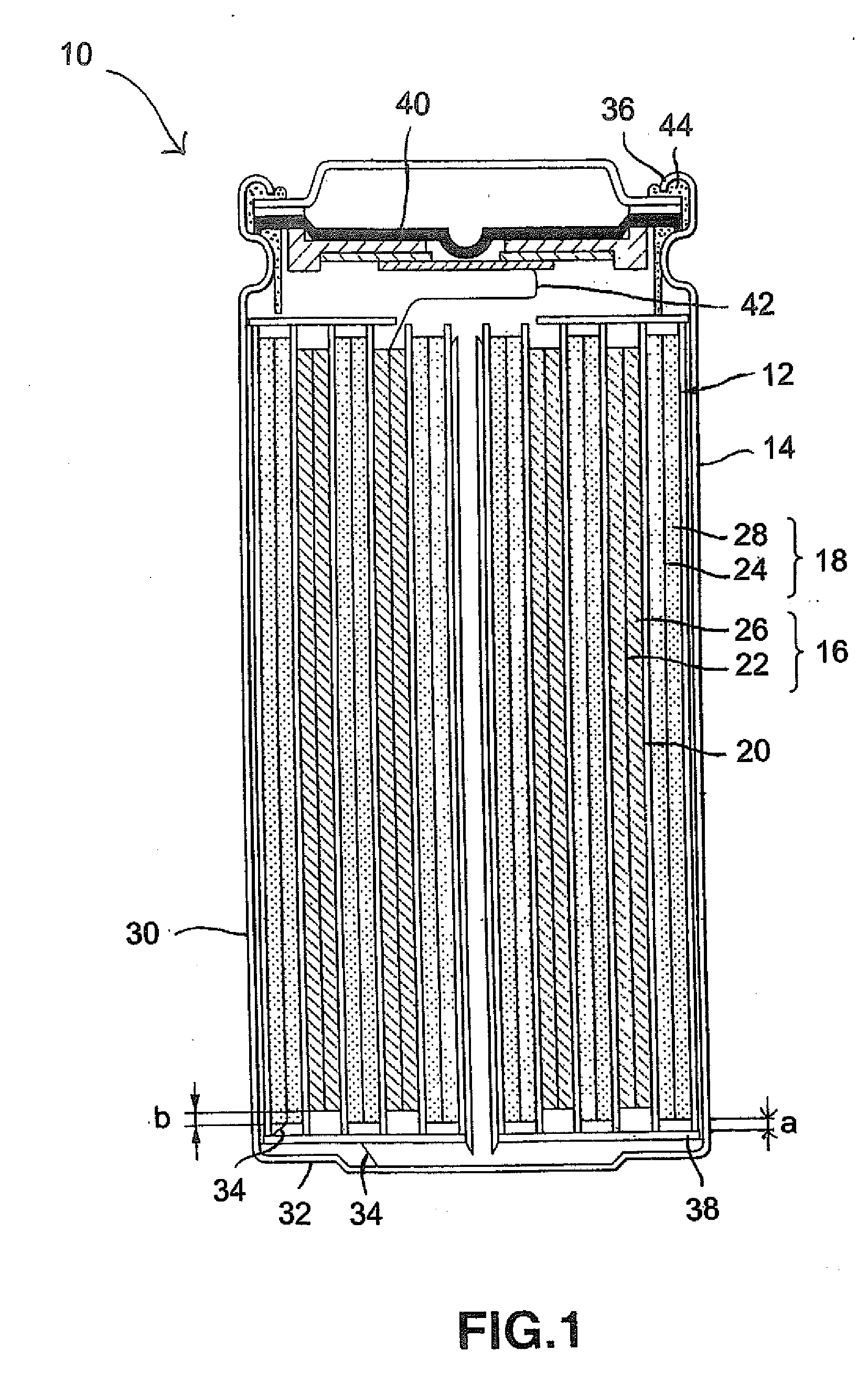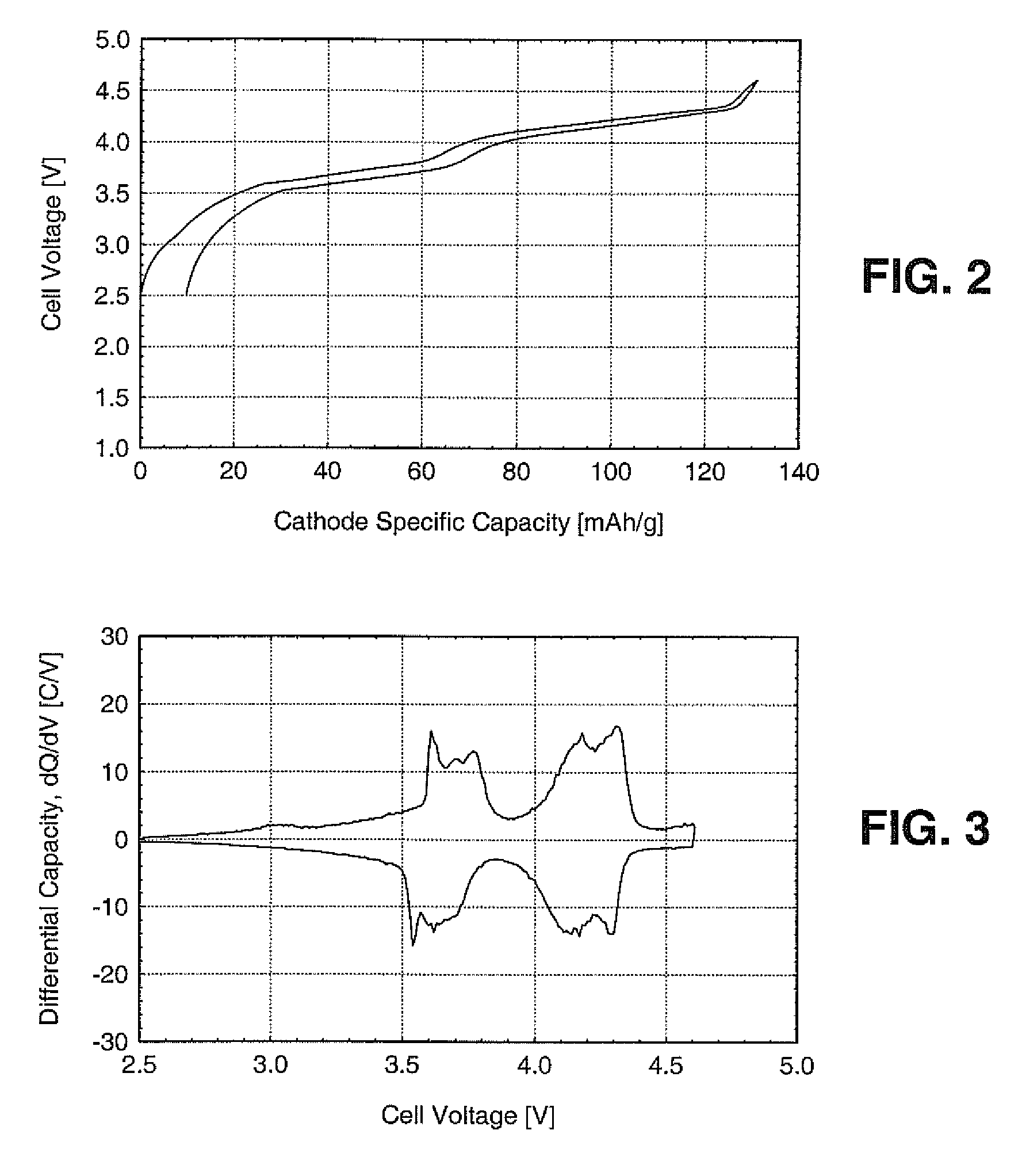Secondary electrochemical cell
- Summary
- Abstract
- Description
- Claims
- Application Information
AI Technical Summary
Benefits of technology
Problems solved by technology
Method used
Image
Examples
example 1
[0142] An electrode active material of formula Na1.025Co0.9Al0.025Mg0.05PO4, is made as follows. The following sources of Li, Co, Al, Mg, and phosphate are provided containing the respective elements in a molar ratio of 1.025:0.9:0.025:0.05:1.
0.05125 moles Na2CO3 (mol. wt. 105.99 g / mol) 7.7 g0.03 moles Co3O4 (240.8 g / mol) 7.2 g0.0025 moles Al (OH)3 (78 g / mol)0.195 g 0.005 moles Mg(OH)2 (58 g / mol)0.29 g0.1 moles (NH4)2HPO4 (132 g / mol)13.2 g0.2 moles elemental carbon (12 g / mol) (>100% excess) 2.4 g
[0143] The above starting materials are combined and ball milled to mix the particles. Thereafter, the particle mixture is pelletized. The pelletized mixture is heated for 4-20 hours at 750° C. in an oven in an argon atmosphere. The sample is removed from the oven and cooled. An x-ray diffraction pattern shows that the material has an olivine type crystal structure. An electrode is made with 80% of the active material, 10% of Super P conductive carbon, and 10% poly vinylidene difluoride. A ...
example 2
[0144] An electrode active material of the formula Na1.025Co0.8Fe0.1Al0.025Mg0.05PO4 is made as follows. The following sources of Na, Co, Fe, Al, Mg, and phosphate are provided containing the respective elements in a molar ratio of 1.025:0.8:0.1:0.025:0.05:1.
0.05125 moles Na2CO3 (mol. wt. 105.99 g / mol) 7.7 g0.02667 moles Co3 O4 (240.8 g / mol)6.42 g0.005 moles Fe2 O3 (159.7 g / mol) 0.8 g0.0025 moles Al (OH)3 (78 g / mol)0.195 g 0.005 moles Mg(OH)2 (58 g / mol)0.29 g0.1 moles (NH4)2HPO4 (132 g / mol)13.2 g0.2 moles elemental carbon (12 g / mol) (>100% excess) 2.4 g
The above starting materials are combined and ball milled to mix the particles. Thereafter, the particle mixture is pelletized. The pelletized mixture is heated for 4-20 hours at 750° C. in an oven in an argon atmosphere. The sample is removed from the oven and cooled. An x-ray diffraction pattern shows that the material has an olivine type crystal structure. An electrode is made with 80% of the active material, 10% of Super P condu...
example3
[0145] An electrode active material comprising Na2NiPO4F, representative of the formula Na1+xNiPO4Fx, is made as follows. First, a NaNiPO4 precursor is made according to the following reaction scheme.
0.5 Na2CO3+0.334 Ni3(PO4)2.7H2O+0.334 (NH4)2HPO4→LiNiPO4+2.833 H2O+0.667 NH3+0.5 CO2
A mixture of 52.995 g (0.5 mol) of Na2CO3, 164.01 (0.334 mol) of Ni3(PO4)2.7H2O, and 44.11 g (0.334 mol) of (NH4)2HPO4 is made, using a and pestle. The mixture is pelletized, and transferred to a box oven equipped with a atmospheric air gas flow. The mixture is heated, at a ramp rate of about 2° C. minute to an ultimate temperature of about 800° C., and maintained at this temperature for 16 hours. The product is then cooled to ambient temperature (about 21° C.).
[0146] Na1+xNiPO4Fx is then made from the NaNiPO4 precursor. In the Example that follows, x is 1.0, so that the active material produced is represented by the formula Na2NiPO4F. The material is made according to the following reaction scheme. ...
PUM
| Property | Measurement | Unit |
|---|---|---|
| thickness | aaaaa | aaaaa |
| thickness | aaaaa | aaaaa |
| thickness | aaaaa | aaaaa |
Abstract
Description
Claims
Application Information
 Login to View More
Login to View More - R&D
- Intellectual Property
- Life Sciences
- Materials
- Tech Scout
- Unparalleled Data Quality
- Higher Quality Content
- 60% Fewer Hallucinations
Browse by: Latest US Patents, China's latest patents, Technical Efficacy Thesaurus, Application Domain, Technology Topic, Popular Technical Reports.
© 2025 PatSnap. All rights reserved.Legal|Privacy policy|Modern Slavery Act Transparency Statement|Sitemap|About US| Contact US: help@patsnap.com



